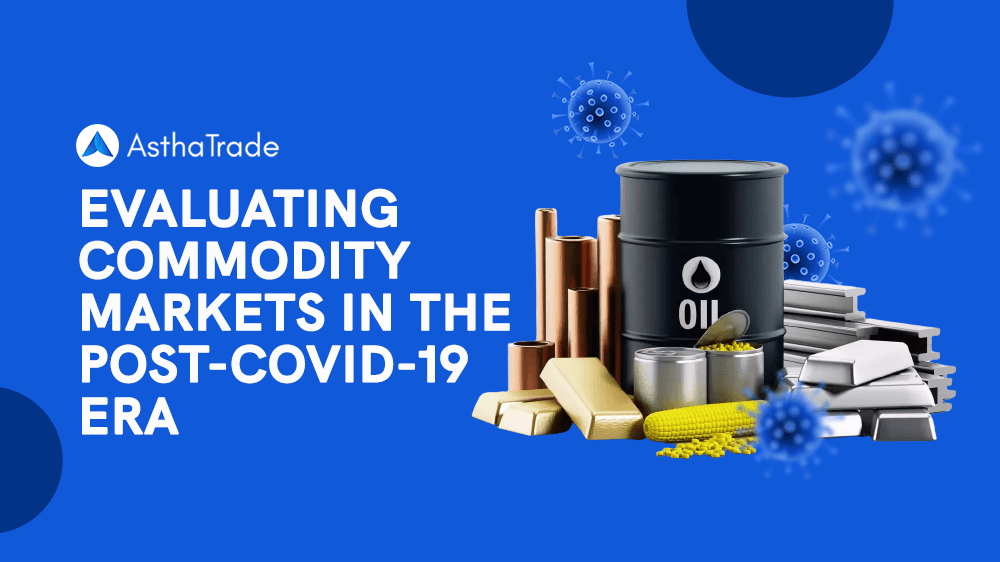Hard and Soft Commodities - Key Differences, Trading, Examples


00:00 / 00:00
Commodities play a vital role in the world economy. They are goods that are used and traded on a large scale. Commodities are divided into two categories: hard commodities, such as crude oil, copper and gold, which are extracted from the earth; and soft commodities, such as wheat, cotton and coffee, which are agriculturally based. Their price fluctuations are affected by global supply, demand and seasonal conditions, making them important to understand from an investment perspective.
What are Hard and Soft Commodities?
Commodities are those items that are used in large-scale production, trade, and investment. They are divided into two major categories: hard commodities and soft commodities.
Hard commodities: Hard commodities are those items that are extracted from the earth or obtained from natural resources. These mainly include crude oil, natural gas, gold, silver, and copper. All these are known as hard commodity examples. When asked what is a hard commodity, the answer will be - a commodity that is obtained through mining or drilling.
Soft commodities: Soft commodities are those that are related to agriculture or animal husbandry, such as coffee, wheat, cotton, corn, and sugar. These are called soft commodities, and are often affected by climate, weather, and seasonal demand.
The difference between hard vs soft commodities is not only in their source, but also in their demand, price stability, and investment strategies. Both play an important role in the global economy.
Key Differences Between Hard and Soft Commodities
There are several key differences between hard commodities and soft commodities, reflecting their source, price stability and investment impact.
Feature | Hard Commodities | Soft Commodities |
Source | Extracted from the earth through mining or drilling | Derived from agriculture or livestock. |
Examples | Crude oil, gold, silver, copper, coal | Wheat, cotton, coffee, sugar, corn |
Price Volatility | Influenced by global demand, supply, and geopolitics | More sensitive to weather, crop yield, and seasons |
Key Influencing Factors | Wars, trade policies, industrial demand | Monsoon, drought, pests, crop quality |
Investment Risk | Comparatively stable, but affected by geopolitical events | Higher volatility, but can be profitable with good timing |
Sector Usage | Energy, construction, metal industries | Food industry, FMCG, textiles, and related sectors |
Such a clear comparison makes it easier to understand the different aspects and risk factors of investing in hard commodity vs soft commodity.
How Supply and Demand Affect Prices
The prices of hard commodities and soft commodities depend directly on global demand and supply. When the demand for a commodity is high and its supply is low, the prices rise. On the other hand, when the supply is high and demand is low, the prices fall.
The prices of hard commodities such as crude oil are affected by the production policies of OPEC countries. If OPEC reduces production, the supply decreases and the prices rise. Similarly, the prices of soft commodity examples such as wheat, maize and cotton depend on weather, drought, flood and crop conditions. If the monsoon is weak in India, the supply of wheat or paddy may decrease, which increases the prices. War, inflation, disruption in logistics, and technological changes also affect the prices of both types of commodities. For example, the Russia-Ukraine war led to huge fluctuations in the global prices of wheat and crude oil.
Therefore, it is important for investors to understand how changing trends in supply and demand affect market movements.
Ways to Invest in Commodities
There are several ways to invest in hard and soft commodities, depending on the investor's knowledge, risk profile and goals:
1. Futures and options trading: Futures and options trading is the most popular method, where traders bet on future prices. This method is high risk and high reward.
2. Commodity ETFs and mutual funds: The portfolio can be diversified by investing in commodity-based exchange-traded funds (ETFs) and mutual funds.
3. Shares of commodity producing companies: Buying shares of companies that produce commodities like gold, oil and sugar is also one way.
4. Online commodity trading platforms: In today's digital age, trusted stock broking companies like Rupeezy offer simple and secure commodity trading. On Rupeezy, customers can easily invest in hard and soft commodities on platforms like MCX.
Why Include Commodities in Your Portfolio?
Commodities play an important role in balancing and securing an investment portfolio. Whether it is hard commodities (such as crude oil, gold, silver, copper) or soft commodities (such as wheat, cotton, coffee, corn) these asset classes behave very differently from stocks and bonds.
1. Strong means of diversification: When there is volatility in the stock market or debt market, commodities often perform better. For example, when the market falls due to some reason (such as recession or war), then the demand for hard commodities like gold increases. This reduces the negative impact on the portfolio.
2. Inflation Hedge: When inflation increases, the prices of consumer goods increase, which increases the value of soft commodities (such as sugar, grains, edible oils). Due to this, investors investing in commodities can get profits during periods of inflation.
3. Performance against market cycles: While assets like equities and real estate are typically linked to economic growth, commodities often move in the opposite direction. This makes them an important counter-cyclical asset.
4. Easy commodity trading on Rupeezy: If investors want to start trading in hard and soft commodities, Rupeezy is a reliable and technologically advanced platform. Here customers can easily trade commodities like crude oil, gold, silver, wheat, cotton through registered exchanges like MCX. Also, with real-time data, analysis tools and professional support, trading on Rupeezy becomes fast, secure and convenient.
Risks to Consider When Investing
Although hard and soft commodities diversify the investment portfolio, they also involve some significant risks.
Market Volatility: Commodity prices change rapidly. Hard commodities like crude oil and soft commodities like cotton, wheat are affected by weather, supply chain disruptions, and global demand.
Geopolitical and climate risks: Factors like war, political tension, or international sanctions can affect hard commodities. On the other hand, soft commodities are directly affected by drought, floods, and pest attacks.
Leverage risk in futures: Even small movements in futures contracts can cause big losses, especially when investors use leverage.
The performance of hard vs soft commodities varies in different market cycles, so proper risk analysis is necessary before investing.
Conclusion
Investing in commodities is not only an effective way to diversify a portfolio, but it also provides protection against risks such as market volatility and inflation. In this blog, we have explored in detail what hard commodities (e.g. gold, crude oil) and soft commodities (e.g. wheat, cotton, coffee) are, the key differences between them, and how demand and supply affect prices.
Understanding both types of commodities and the factors behind their performance is a must for every investor. With the right information and strategy, commodity investing can add both stability and profit to a portfolio.
FAQs
Q: What is an example of a soft commodity?
A prime example of a soft commodity is cotton. Apart from this, coffee, wheat, corn and sugar also fall under the category of soft commodities because they are based on farming and crops.
Q: What are all hard commodities?
Hard commodities are commodities that are obtained from the earth through mining or drilling. The major ones include: crude oil, gold, silver, copper, aluminum, coal and natural gas. These commodities are mainly used in the industrial and energy sectors.
Q: What is the concept of soft and hard markets?
A "soft market" is a situation where demand is low and supply is high, causing prices to fall. Whereas a "hard market" is a time when demand is high and supply is limited, causing prices to rise sharply. This concept applies to many sectors such as commodity markets, real estate, and the insurance sector.
Q: Why are commodities important for portfolio diversification?
Commodities perform differently from the stock market, providing balance and protection to the portfolio even during market downturns. They also act as a hedge against inflation.
Check Out These Related Articles |
The content on this blog is for educational purposes only and should not be considered investment advice. While we strive for accuracy, some information may contain errors or delays in updates.
Mentions of stocks or investment products are solely for informational purposes and do not constitute recommendations. Investors should conduct their own research before making any decisions.
Investing in financial markets are subject to market risks, and past performance does not guarantee future results. It is advisable to consult a qualified financial professional, review official documents, and verify information independently before making investment decisions.

All Category









